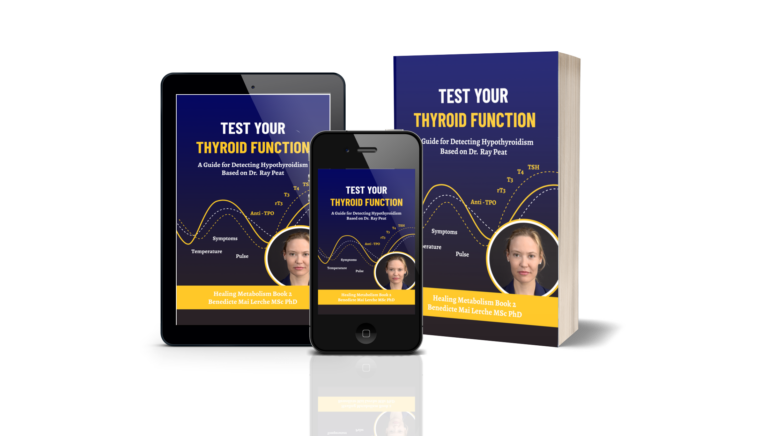When assessing thyroid function, I advocate for a multi-faceted approach that includes thyroid blood tests, at-home assessments using pulse rate and body temperature, and a thorough evaluation of symptoms. This comprehensive method is crucial for the accurate detection and management of hypothyroidism, as emphasized by Dr. Ray Peat.
My book “Test Your Thyroid Function,” comprehensively covers Dr. Ray Peat’s approach to thyroid testing and the detection of hypothyroidism.
Key topics include
- Metabolism and the significance of active thyroid hormones, T3.
- The interplay between TSH, T4, and T3.
- Causes and triggers of hypothyroidism.
- T4 to T3 conversion defect.
- T3 tissue blocking.
- The negative effects of high Reverse T3 (rT3).
- Hashimotho’s thyroiditis
- The truth about thyroid antibodies.
- Essential thyroid blood tests.
- Issues with thyroid blood test reference ranges.
- What is a good TSH level?
- Optimal levels of T4 and T3.
- The ratio of T3 to rT3.
- Optimal levels of thyroid antibodies.
- The importance of at-home thyroid testing.
- Hypothyroid symptoms.
- Healthy body temperature.
- Healthy pulse rate.
- Stress hormones and thyroid testing.
- Preparing for your thyroid blood tests.
- Instructions for measuring pulse and temperature.
- Thyroid blood tests summary table.
- Pulse and temperature. tracking templates.
- Symptoms checklist.
- And much more…….
This book reveals how hypothyroidism symptoms often go unnoticed when blood tests are within so-called ‘normal’ ranges. The book challenges this norm, offering a more detailed and precise approach to thyroid testing.
This step-by-step guide is an invaluable resource for anyone looking to accurately identify hypothyroidism and proactively manage their thyroid health. It’s a must-read for individuals suspecting thyroid issues, and those on thyroid medication wanting to assess treatment effectiveness.
The book is a must-read for anyone preparing for a counseling session with me. The insights and test results gained from this book will be highly beneficial for discussion during a session.
This book serves as the first volume in my Amazon book series titled “Healing Metabolism.”


